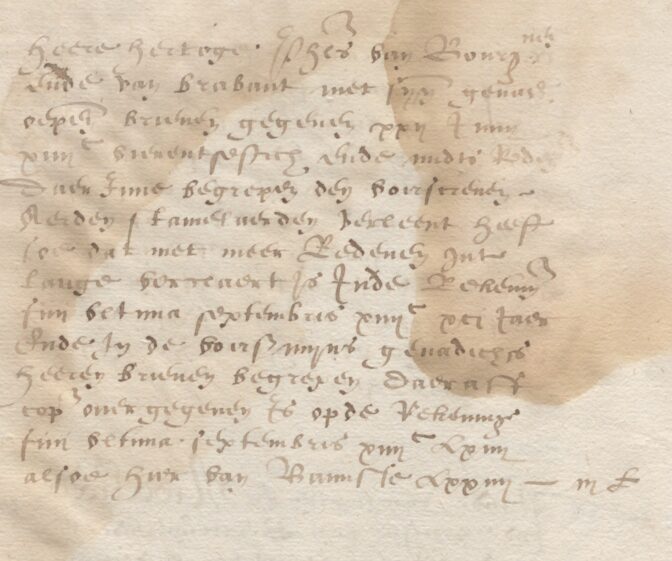Sometimes, relevant records are produced long after the person of interest is dead. Here are some examples:
- An estate may remain undivided during the surviving spouse’s lifetime. The records of how the estate was divided and who the heirs were might be decades later.
- A record may have been copied at a later time, for example as part of court proceedings or a chartulary. The original record may not survive, but the later copy might.
- Land records may include details about the provenance of the land. Other land transactions were initially recorded privately, and only later copied into public records.
For an example of a much newer record providing relevant evidence, see generation 22 of my line back to Eleanor of Aquitaine, where a record from 1574/1575 describes the original grant in 1346 by the Duke of Brabant to his bastard brother Jan van Blaesveld. This record, created more than two centuries after the fact, became part of the proof argument to prove the parents of Jan van Blaesveld.

1574-1575 steward’s accounts

